Day: November 24, 2023
How Israel Responded to the Deadly Hamas Attacks: A Timeline – The New York Times https://t.co/cCcc9ZmlT7
— Michael Novakhov (@mikenov) November 24, 2023
Intelligence shared with the United States suggests a small cell of Hamas operatives planning the deadly surprise attack on Israel communicated via a network of hardwired phones built into the network of tunnels underneath Gaza over a period of two years, according to two sources familiar with the matter.
The phone lines in the tunnels allowed the operatives to communicate with one another in secret and meant they could not be tracked by Israeli intelligence officials, the sources told CNN.
During the two years of planning, the small cell operating in the tunnels used the hardwired phone lines to communicate and plan the operation but stayed dark until it was time to activate and call on hundreds of Hamas fighters to launch the October 7 attack, the sources said.
They avoided using computers or cell phones during the two-year period to evade detection by Israeli or US intelligence, the sources said.
“There wasn’t a lot of discussion and back and forth and coordination outside of the immediate area,” one of the sources said.
The intelligence shared with US officials by Israel reveals how Hamas hid the planning of the operation through old-fashioned counterintelligence measures such as conducting planning meetings in person and staying off digital communications whose signals the Israelis can track in favor of the hardwired phones in the tunnels. It offers new insight into why Israel and the US were caught so flat-footed by the Hamas attack, which saw at least 1,500 fighters pouring across the border into Israel in an operation that killed at least 1,400 Israelis.
CNN has not seen the specific intelligence but spoke to sources familiar with it. The US Office of the Director of National Intelligence declined to comment and the Israeli embassy in Washington did not respond to a request for comment.
CNN previously reported that a series of strategic warnings from US and Israeli intelligence agencies did not lead officials from either country to anticipate the events of October 7.
The Israel Defense Forces colloquially refers to the tunnels built by Hamas over the last fifteen years or so as the “Gaza metro.” The tunnels make up a vast labyrinth that is used to store rockets and ammunition caches, as well as provide a way for militants to move about unnoticed. The IDF also says it contains vital Hamas command and control centers.
Yocheved Lifshitz, an 85-year-old grandmother who was one of two hostages released by Hamas on Monday, said after she was kidnapped, she was taken into the network of tunnels and slept on a mattress on the floor in one of them.

According to the sources briefed on the Hamas assault, the small cell waited until just before the attack was launched to prep a larger group of fighters above ground to carry out the specific operation. One of the sources said that though ground unit commanders and fighters were being trained for many months and kept at a state of general preparedness, they were only informed of the specific plans in the days leading up the operation.
“That’s how you compartment and keep something that’s tight,” the source added, noting that’s what happened in this case.
One of the sources said some of the training above ground was observed but did not ring major alarm bells. The thinking was, “oh they always train people like this. It didn’t look different,” the source said.
A third source familiar with the latest intelligence said Iran has helped Hamas develop their operational security tactics over the years, though US intelligence does not believe Iran played a direct role planning the October 7 attack itself.
Israel was aware that Palestinian militants had been using hardwired communication systems prior to the October attack.
It encountered what appeared to be a similar kind of communication system when the Israeli military raided the city of Jenin in the northern West Bank this summer, according to an Israeli official. When Israeli troops moved in as part of what was dubbed “Operation Home and Garden,” the Israel Defense Forces discovered secure, hardwired communication lines and closed-circuit surveillance cameras to give advance warning of Israeli troop movements.
At the time, the IDF said it had struck a joint operational command center used by militant cells in Jenin, noting that it was used for “advanced observation and reconnaissance.” It was, the IDF said, a “hub for coordination and communication among the terrorists.”
CNN’s Oren Liebermann contributed reporting.
Israeli leaders grew complacent about security near Gaza, were distracted by internal issues and underestimated Hamas’s violent ideology.
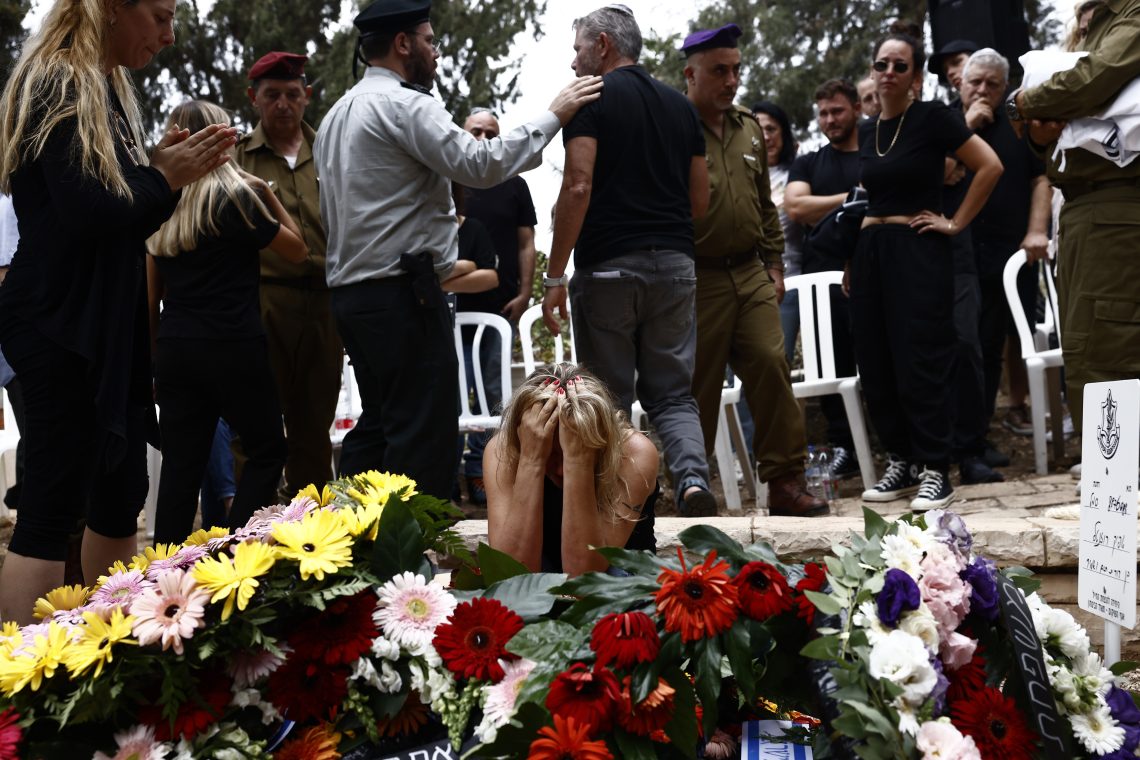 The funeral of Afik Rozental, an Israeli soldier killed during fighting with Hamas, in Kfar Menahem, Israel, on Monday, Oct. 9, 2023. © Getty Images
The funeral of Afik Rozental, an Israeli soldier killed during fighting with Hamas, in Kfar Menahem, Israel, on Monday, Oct. 9, 2023. © Getty Images
- Israeli military intelligence relied too much on technology
- Iran saw a moment of geopolitical opportunity
- All political sides in Israel were wrong about Hamas
Israel is still reeling from a devastating surprise attack launched by a much inferior military force. It came 50 years and one day after Israel suffered the most disastrous attack in its history thus far, on October 6, 1973, when a coalition of Arab nations nearly brought the Jewish state to its knees on the Yom Kippur holiday. That war ended with an Israeli victory, 100 kilometers from Cairo and 35 kilometers from Damascus, but it has been etched in Israeli memory as a tragedy and a Pyrrhic victory.
The Simchat Torah attack of October 7, 2023, was even more catastrophic. In the Yom Kippur War, Israel faced a bitter military confrontation around the Suez Canal, hundreds of kilometers away from its borders. Even in the Golan Heights, a far smaller buffer zone than the Sinai Desert, there was room for military maneuvers and all civilians managed to evacuate in time.
Hamas’s surprise assault hit Israel in its soft underbelly, the civilian population living near the Gaza Strip. Unlike 1973, when the country was fully united behind its political leadership, today’s Israel is divided over Prime Minister Benjamin Netanyahu’s profound constitutional changes that half the public believes would establish a dictatorship.
Hamas’s threats to destroy Israel have never been a secret; they have been written openly at the heart of its covenant. The brutal murder at the hands of its fighters of over 1,800 Israelis and counting – including hundreds of women, children and elderly – and the kidnapping of nearly two hundred more now lie like a pall of darkness over the whole country.
Several factors combined to create a perfect storm for Hamas to strike now and deliver a devastating blow.
Since December 2021, when Israel completed an electronic fence and an underground barrier that effectively prevented Hamas from digging tunnels into Israeli territory, the terror group began working on ways to overcome this limitation. It became clear that any activities would have to be taken above ground and by sea.
Hamas was encouraged by shifting Israeli national priorities that led its security planners to rely heavily on electronic surveillance and remote-controlled weapons at the expense of boots on the ground and the human eye. Israel’s entire defense system became far too reliant on technology. Just as, 50 years ago, Egyptian intelligence carefully learned Israel’s military modus operandi, so did Hamas.
With Iranian guidance, the Palestinian terror group devised ways to blind Israeli surveillance and the communications necessary for command-and-control systems. Israel’s Gaza Division command post was cut off, leaving individual units to act on their own. During the first hours, its helicopter gunships’ pilots were receiving their instructions via personal cellphones. Meanwhile, many soldiers had been sent home for the Jewish holiday. All this helps explain the long hours during which unarmed civilians were left to be slaughtered, one residence at a time.
Another factor parallels the Yom Kippur War: Just as in 1973, Israeli hubris resulted in complacency. IDF intelligence and the Shin Bet security service studied the enemy’s plans and training. Yet, due to a conceptual mistake, coupled with an overreliance on technology and political pressure to shift their priorities to the West Bank, the military command downplayed the danger from Gaza.
Due to the influence of West Bank settlers on the priorities of Prime Minister Netanyahu – whose ruling coalition depends on their political bloc – the main security emphasis since the beginning of 2023 has been on protecting those settlers against Palestinian terrorism. This protection is essential, but it has not always been managed rationally. In many cases, the taking of unreasonable risks necessitated outsize resources.
This happened, for example, when more than an entire regular battalion was recently needed to secure 150 people who insisted on praying amid heightened tensions at the traditional Jewish site of Joseph’s Tomb, in the Palestinian West Bank city of Nablus. On October 6 and 7, the Israel Defense Forces (IDF) were pressed into protecting a sukkah (a temporary hut for the Sukkot holiday) provocatively set up by Jewish settlers in the flashpoint Palestinian village of Huwara. This meant sending an unprecedented number of regular, well-trained troops to the West Bank. While this by itself did not affect the first line of soldiers positioned around the Gaza Strip, it reduced the forces positioned behind it as a strategic reserve.
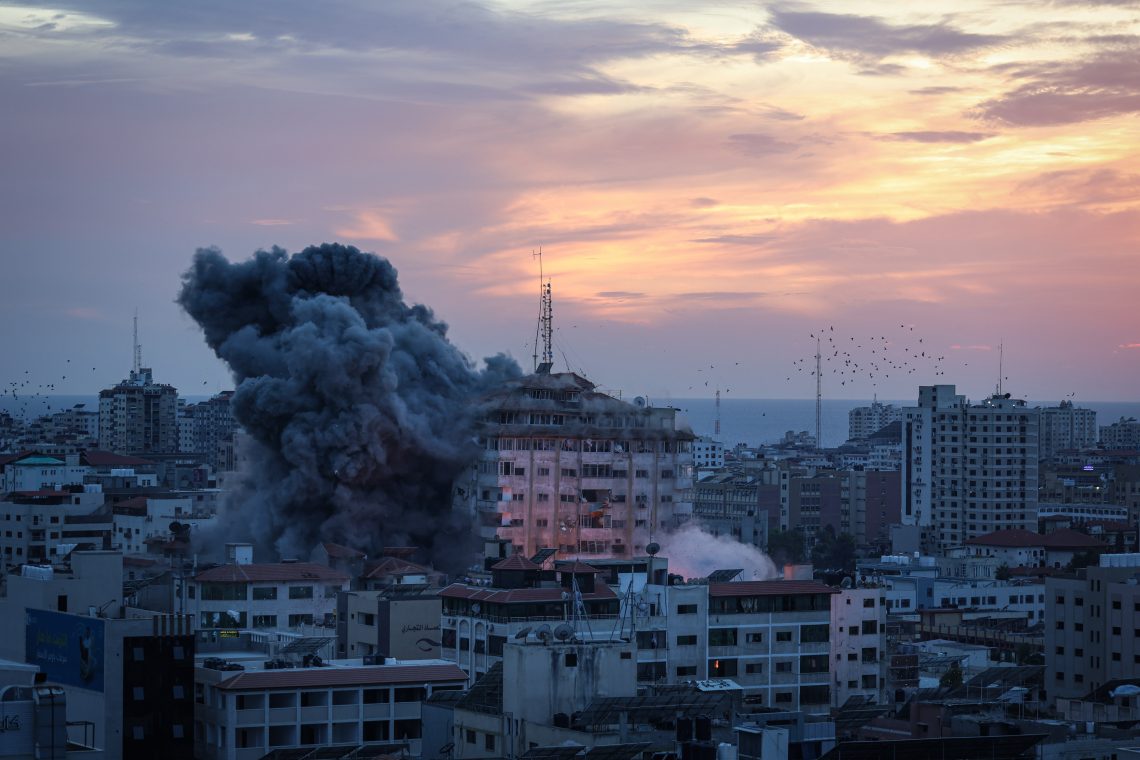 Smoke from a retaliatory Israeli airstrike in the Rimal district of Gaza City, Gaza, on Saturday, Oct. 7, 2023 © Getty Images
Smoke from a retaliatory Israeli airstrike in the Rimal district of Gaza City, Gaza, on Saturday, Oct. 7, 2023 © Getty Images
Since January 2023, just after Mr. Netanyahu’s coalition came to power, Israel has been divided over his government’s proposed constitutional revolution. This has very seriously affected the Israeli military. It started with fighter pilots in the reserve forces announcing that they would no longer volunteer to serve, in protest of the controversial judicial reform plan, and it later spread throughout the military reserves and began gnawing at regular forces.
When the IDF chief of staff demanded to meet the prime minister to warn him about the deterioration of military preparedness and morale, he was turned down. Since last spring, Arab and Iranian media have been reporting a slow-motion disintegration of the Israeli military and society. These reports were greatly exaggerated, but the impression in Gaza, Beirut and Tehran was that the IDF was melting away, and that Israel’s end is near.
During the seven-day Sukkot festival, a large number of Israeli citizens came to visit the Temple Mount in Jerusalem, a site also venerated by Muslims as the Al-Aqsa compound. This has been happening every year since 1967, but this time Hamas effectively played it up, casting the visits as a breach of the status quo and as an attempt by Jewish settlers to destroy Al-Aqsa. History has taught us that, since 1928, Islamic propaganda accusing the Jews of attempts to rebuild King Solomon’s temple on the ruins of the holy mosque rarely fails to arouse strong feelings among believers.
Since the Russian invasion of Ukraine, Iran’s strategic position has been greatly strengthened. Tehran has received critical Russian strategic support in exchange for Iranian military supplies for the war in Ukraine. Then came its emerging rapprochement with Saudi Arabia and the Gulf Arab states, motivated by their fear that the United States was abandoning the Middle East. The Biden administration’s response was to send extra troops to the Gulf region – and, more importantly, to broker a normalization agreement between Israel and Saudi Arabia.
The Iranians became disillusioned about their new romance with the Gulf states, as it did not seem to go any further than diplomatic gestures. They also grew very concerned about the impending Israeli-Saudi agreement. Looking for a way to disrupt it, a war between Israel and Hamas would seem like a stroke of genius. They must have also hoped that West Bank Palestinians, and maybe even Israeli Arabs, would join the fray. It would have been obvious that an Israeli retaliation would be painful. However, they were ready to fight Israel to the last Sunni Palestinian Arab. The crucial question now is: are they also ready to fight Israel to the last Shiite Arab – the last Hezbollah and Iraqi militia fighter?
Hamas’s leadership, too, was fully aware that such a brutal attack would punish the residents of Gaza with a painful Israeli response. However, provided that their own families were safe, the terror group’s officials have always been ready to sacrifice their own people on the altar of an anti-Israel, anti-Jewish ideology. When an opportunity offered itself, even the less adventurous elements of the Hamas brass could not help themselves. They may also have started to believe their own propaganda that Israeli society was nearing a collapse. In this telling, delivering a humiliation to Israel – including the torture, rape and indiscriminate murder of children, women and the elderly – could finish the job, and prompt Israelis to begin leaving the country in fear and despair.
Breaking away from Iran (Part 1): Lebanon
Breaking away from Iran (Part 2): Iraq
Here we come to Israel’s main blunder. Until October 7, practically all Israeli analysts, strategic planners and politicians on both sides of the spectrum believed that Hamas was capable of moderation. Successive Israeli governments allowed Hamas to receive hundreds of millions of dollars in cash from Qatar, overlooking that much of this was used to strengthen the terror group itself. They also allowed some 17,000 workers to cross the border every day. These workers were paid standard Israeli salaries by kibbutzim near the Gaza Strip, but some also managed to provide Hamas with accurate information on targets there, while some even participated in the attack.
Israel allowed Hamas to import most of what it wanted, including large quantities of cement, which they used mainly for fortifications and underground tunnels. Israel provided Gaza with some 10 percent of the water its population needed, as well as much of the electricity and almost all the fuel. Israeli entrepreneurs had established at least two high-tech factories in Gaza in the hope that Hamas-controlled Gaza would someday become like Singapore. Almost all Israeli observers saw Hamas incrementally becoming a house cat, only to realize on October 7 that it remained an Islamist tiger.
But there is a crucial difference between Israel’s political right and its left and center. The latter have accepted the concept of a Palestinian state as a plausible option if security arrangements were watertight. They prefer to leave this option open, even if it does not look promising now. This has led the center and left to oppose the annexation of West Bank and, among some elements, even to demand that no more settlements be established.
This position also implies that extending the rule of the Palestinian Authority (PA) over the Gaza Strip is a possibility. This segment of the Israeli polity supported every concession to Hamas – neither to compete with the PA nor to divide the Palestinian public, but out of a belief that Hamas could evolve. Perhaps, they thought, it could eventually join a peace process, or at least permanently cease bombarding Israel with rockets every few months. They believed that Hamas would eventually settle for improving the lives of Palestinians in Gaza.
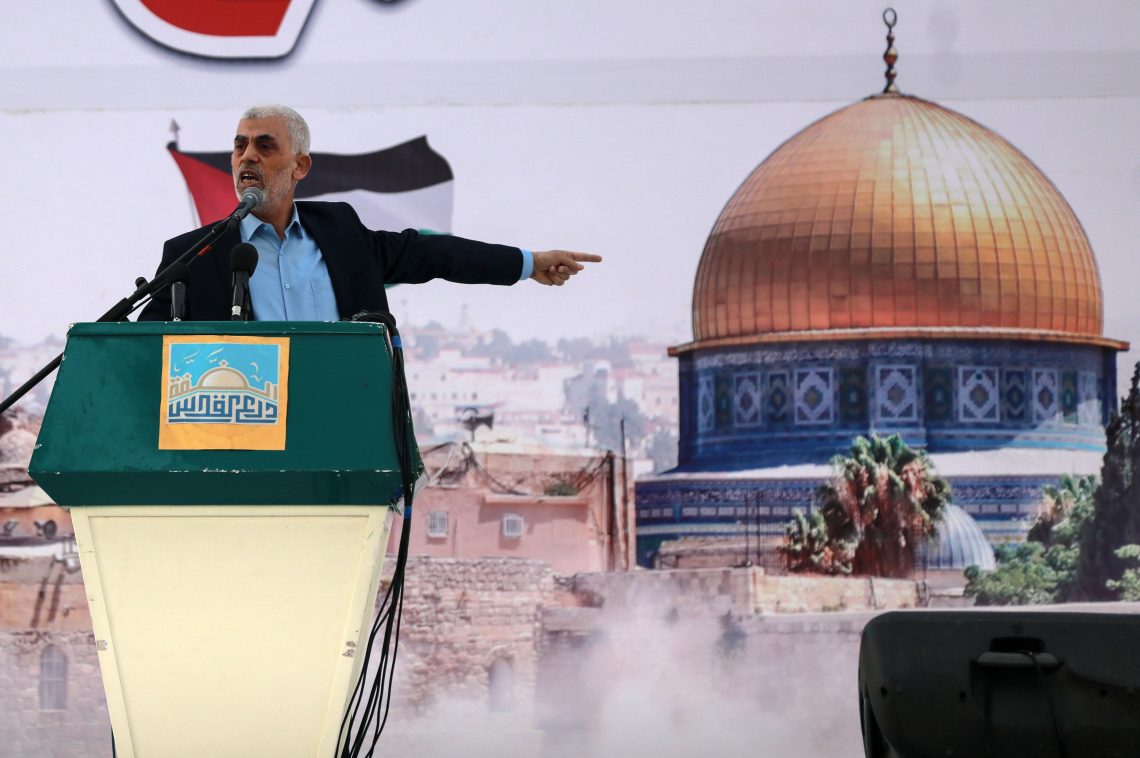 Yahya Sinwar, head of the political wing of Hamas, speaks during a protest in the Gaza Strip held to mark Al-Quds (Jerusalem) Day, April 14, 2023. © Getty Images
Yahya Sinwar, head of the political wing of Hamas, speaks during a protest in the Gaza Strip held to mark Al-Quds (Jerusalem) Day, April 14, 2023. © Getty Images
The Israeli political right saw it very differently, but with the same results. For Mr. Netanyahu and the right, weakening the PA and strengthening Hamas was a way to make a future Palestinian state impossible. Gaza and the West Bank would always be ruled by bitter enemies, too divided to succeed.
But they, too, believed that Hamas could be tamed. They also saw Hamas as an asset because its ideology is so extreme that no Western power could ever support them. On the one hand, the right believed that Hamas was less dangerous than it seemed; and on the other, that its Islamist ideology was so radical as to wreck international support for Palestinian statehood.
This explains how, in 2015, Bezalel Smotrich – then a far-right opposition lawmaker and today Minister of Finance and czar of Civil Administration in the West Bank – could declare that, while the PA is “a burden” to Israel, Hamas is “an asset.” It also explains Prime Minister Netanyahu’s yearslong policy of undermining the government of PA President Mahmoud Abbas and lifting up its rivals in Gaza. As he put it to a Likud party meeting in March 2019: “Anyone who wants to thwart the establishment of a Palestinian state has to support bolstering Hamas and transferring money to Hamas.” In contrast, while the one-year “change” government of Naftali Bennett, Yair Lapid and Benny Gantz accelerated economic support for the Hamas-run Gaza Strip, they also supported the Palestinian Authority.
The Israeli military intelligence and Shin Bet, as well as both the country’s political flanks, missed the main point. They forgot about the barbaric brutality of Hamas on display when its members tortured and killed their Fatah rivals after coming to power in Gaza in June 2007. Israeli analysts forgot that, since 2007, Hamas has been using Gazan citizens as human shields to attack the Jewish state.
They forgot the parable about the scorpion and the frog: violence is simply in Hamas’s nature. Naively, they believed – some out of humanitarian motives, others out of cold political calculation – that an Islamist-nationalist movement could be pacified, or at least muzzled. Neither side of the Israeli divide accepted that an extreme religious-nationalist ideology would be more powerful than life itself.
Israel is now living a nightmare. Yet, the country is also lucky. Had Lebanon’s Hezbollah attacked from the north while Hamas was attacking from the south, the disaster would have been tenfold. Since October 10, the IDF in northern Galilee has been well-prepared for battle. One hopes that Hezbollah will be deterred because they understand the military balance. If they join the fray, it will cost both sides dearly, but Lebanon will pay the heavier price.
For industry-specific scenarios and bespoke geopolitical intelligence, contact us and we will provide you with more information about our advisory services.

Receive insights from our experts every week in your inbox.
Electronic communications in the first hours of the Hamas – Wagner Attack on Israel on October 7, 2023 – Google Search https://t.co/3PBrSak6T2
— Michael Novakhov (@mikenov) November 24, 2023
Electronic communications in the first hours of the Hamas – Wagner Attack on Israel on October 7, 2023 – Google Search https://t.co/3PBrSak6T2 pic.twitter.com/KofiOx03Tt
— Michael Novakhov (@mikenov) November 24, 2023
2023 Hamas attack on Israel – Wikipedia https://t.co/v4RlFDflfs.
— Michael Novakhov (@mikenov) November 24, 2023

Attackers
terrorize
streets
Hostages
taken to
Gaza Strip
About
8 hours
after attack
More than
8.5 hours
after attack
Rescues reported
more than
13 hours
after attack
More than
20 hours
after attack

People waited more than 8.5 hours for rescue
“They are entering
the houses”
“We kept
hoping for help”
Concertgoers
rescued from bush
Hostages taken
to Gaza Strip
Rescues reported
late into the night
Attackers
terrorize streets
“I don’t think I’m going
to make it out of here”
Rescues reported
late into the night
More than a month after Hamas terrorists launched an unprecedented surprise attack on Israel and infiltrated the country by air, land and sea on Oct. 7, the region stands on high alert amid fears of a wider conflict and thousands dead on both sides of the Israel-Gaza border.
According to the Israeli prime minister’s office, more than 1,200 people have been killed in Israel, with 6,900 others injured. Israeli officials say 383 Israel Defense Forces soldiers have been killed since Oct. 7, including 68 since the ground campaign began.
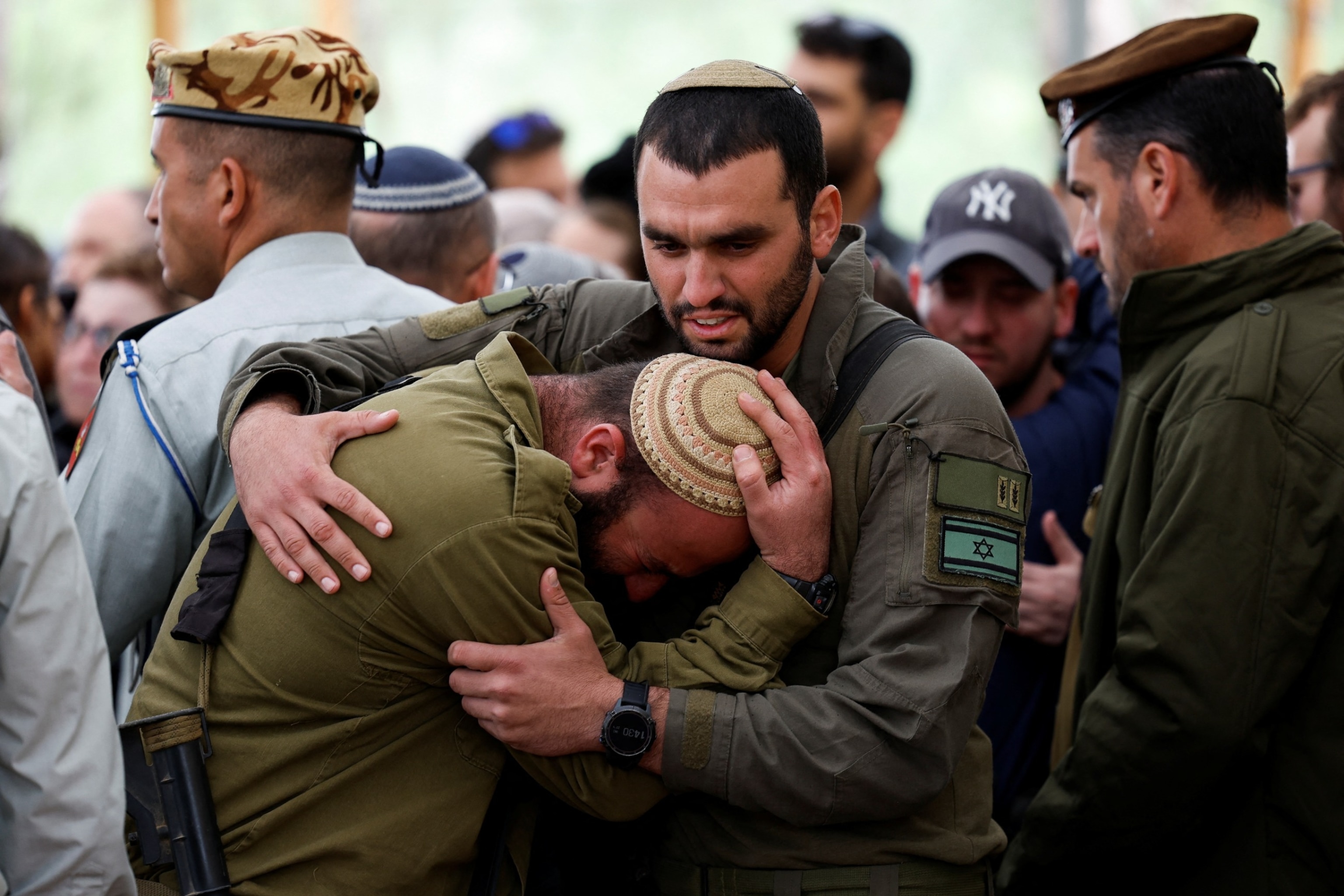
On Nov. 22, Israel’s Cabinet approved a deal that would allow for the release of at least 50 hostages — women and children — over the course of a four-day pause in fighting, Prime Minister Benjamin Netanyahu said. As a part of this deal, 150 Palestinian prisoners will also be released by Israel. Netanyahu said in a release the “Israeli government has approved the outline to the first phase” of bringing hostages home.
Three Americans — including a 3-year-old — are expected to be part of the initial group of hostages that will be released, according to a senior administration official. The deal was negotiated between Hamas, Israel, Qatar and the United States. White House national security adviser Jake Sullivan said Nov. 12 at least nine Americans remain unaccounted for. Israeli officials have said Hamas is believed to be holding 236 hostages in Gaza.

The Hamas-run Gaza Health Ministry says at least 14,532 people have been killed in Gaza amid Israel’s retaliatory campaign and ground operations began. More than 35,000 have been injured, the ministry says, with almost 1.5 million people displaced, according to the United Nations Relief and Works Agency. As of Nov. 3, 67% of all deaths in Gaza were made up of women and children while thousands more have been injured, according to several U.N. agencies, including the UNRWA. In the West Bank, about 215 people have been killed and more than 2,500 injured, according to the Palestinian Ministry of Health.
Israeli and U.S. officials have said the Hamas-run Gaza Health Ministry inflates the number of civilian casualties, with Netanyahu having said thousands of the dead are Hamas terrorists.

The conflict was touched off a month ago by the sneak attack, which included thousands of armed Hamas terrorists breaching a border security fence separating Gaza from Israel, and indiscriminately torturing and gunning down Israeli civilians in their homes, also attacking soldiers, caught off guard, on military bases. Other militants stormed beaches in Israel on motorboats. And some brought death from the sky, paragliding into Israel, to launch a barbaric attack at an open-air music festival that had been billed as a celebration of “unity and love.”
In the immediate aftermath of the Oct. 7 Hamas attack, which also included thousands of missiles launched at Israel from the Gaza Strip, the IDF began its campaign of retaliation, bombarding Gaza with airstrikes. Israel soon vowed to eradicate Hamas, the terrorist organization that runs Gaza and is believed to operate with the backing of Iran.
Here are the key developments that have happened so far in the war:
A barrage of rockets
Oct. 7, 6:30 a.m. in Israel
Air raid sirens begin sounding in Jerusalem around 6:30 a.m. local time, warning citizens of the attack in progress and to immediately take cover. An estimated 2,200 rockets were fired toward southern and central Israel, including Tel Aviv and Jerusalem, by the Hamas militants, according to the Israel Defense Forces.
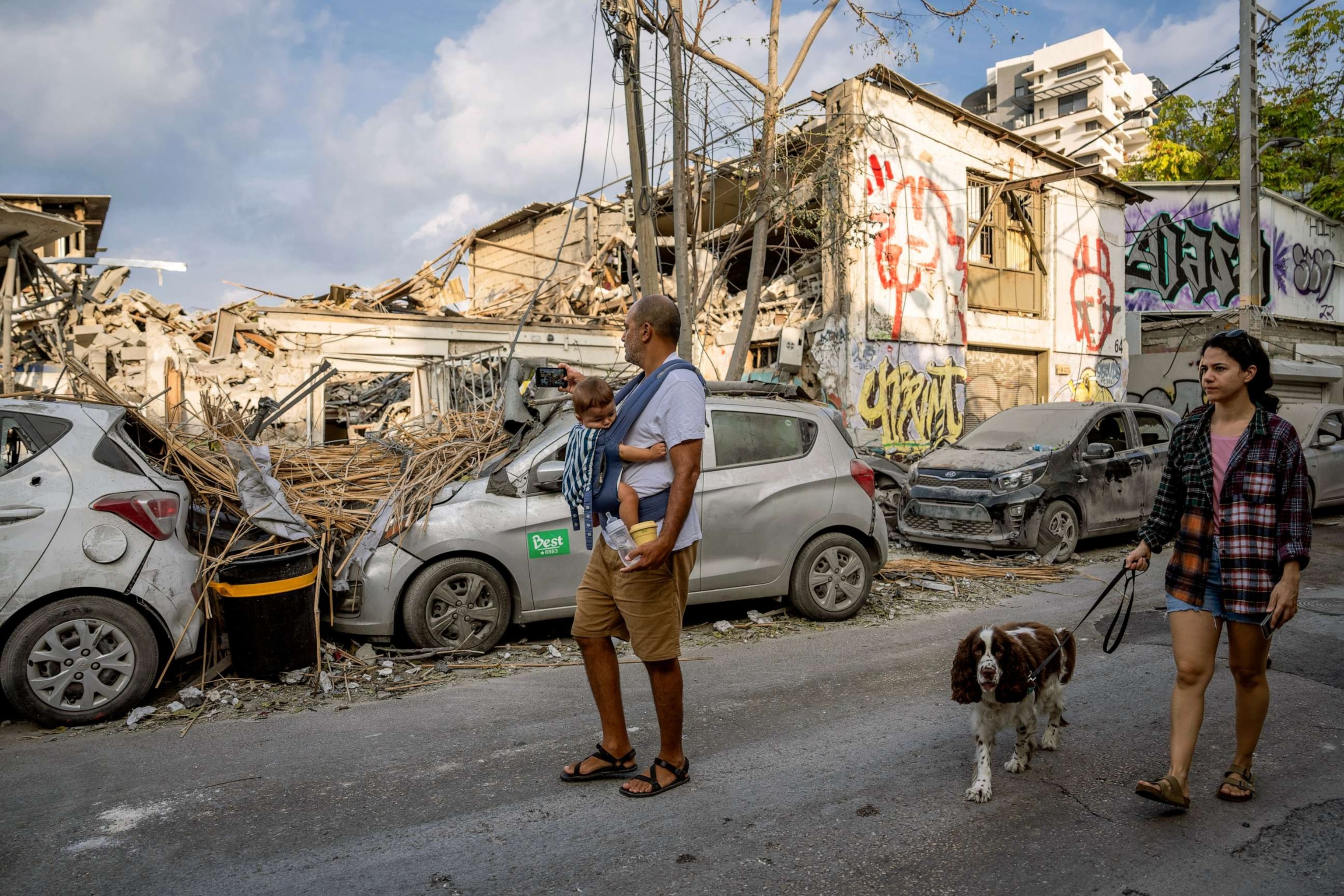
Armed Hamas terrorists, many on motorcycles, storm blockaded areas, shooting at and slaughtering people in kibbutzim and small towns. Video footage surfaces of Hamas militants taking Israeli citizens — including mothers, small children and the elderly — hostage and carrying them across the Gaza border.
Oct. 7, shortly after the attack begins
Mohammed Deif, commander in chief of Hamas’ military arm, Al Qassam Brigades, releases a video statement claiming responsibility for the attack.
‘Israel is at war’
Israeli jet fighters launch retaliatory strikes in Gaza. Video surfaces of a high-rise residential building and the Al-Sousi Mosque in Gaza City being bombed and flattened.
Israeli Prime Minister Benjamin Netanyahu tells his country, “Israel is at war.”
President Joe Biden tells Netanyahu in a phone call that the United States “condemns” Hamas’ assault and has Israel’s back. In a televised address from the White House, Biden says, “Israel has a right to defend itself and its people.”
Oct. 8
At least 30 Israeli police officers are killed in the fighting, mainly in Sderot, Israel, where Hamas gunmen took control of the police station.
Israeli officials announce that fighting is ongoing in six places, including Sderot — which sits just 2 miles from the border with Gaza — and that a rocket injured four people.

Videos posted online show a packed all-night music festival in a desert in southern Israel near the Gaza border being attacked by rockets and armed Hamas militants on the ground. The footage shows women and children among those being dragged away in vehicles and driven back into Gaza. Israeli rescue service Zaka says at least 260 bodies were removed from the venue following the attack.
Secretary of State Antony Blinken tells ABC’s “This Week” anchor George Stephanopoulos that the U.S. has pledged its full support to Israel and says, “The world should be revolted at what it’s seen.”
Oct. 9, morning
Air sirens sound in northern Israel, prompting residents to rush to safe rooms. The IDF claimed at least two rockets were fired toward northern Israel from Lebanon. One of the rockets, according to the IDF, landed in Lebanese territory.
“The IDF neutralized a number of terrorist infiltrators who crossed from Lebanon into Israel. We are defending our country and stand ready on all borders,” the IDF says in a statement.
An official with the U.S. National Security Council confirms there were nine Americans killed in Israel. The death toll would continue to climb.

The IDF announces its jet fighters struck 130 targets in the Gaza Strip, and Israeli Defense Minister Yoav Gallant orders a “complete siege” of Gaza, cutting electricity to the region and blocking fuel and food from entering the territory from Israel.
The IDF announces it has mobilized 300,000 reserves — the largest and quickest call-up in Israel’s history.
Hamas says it will start killing Israeli hostages one by one, threatening to film the executions, unless Israel immediately stops shelling homes in Gaza without warning.
‘Pure, unadulterated evil’
Oct. 10
The U.S. confirms that an undetermined number of Americans had been taken hostage by Hamas.
“I’ve directed my team to share intelligence and deploy additional experts from across the United States government to consult with and advise Israeli counterparts on hostage recovery efforts. Because as president, I have no higher priority than the safety of Americans being held hostage around the world,” Biden says.
Biden says the atrocities committed by Hamas fighters included the “slaughter” of men, women and entire families, as well as “stomach-churning reports of babies being killed.”
Gallant tours southern Israel along the Gaza border, telling soldiers they are moving to “a full-scale response” to Hamas’ surprise attack and that he has “removed every restriction.”
“Hamas wanted to see a change in Gaza — the reality is Gaza will make a 180. They will regret [their actions],” Gallant said.

Oct. 13
The IDF calls for “all residents of Gaza City to evacuate their homes” and “move south for their protection.”
Israel begins warning more than 1 million Palestinians to move to a safer part of the territory, in southern Gaza, as Israeli soldiers prepared what was expected to be a massive ground campaign against Hamas fighters, many of whom are believed to be hiding in a miles-long network of tunnels under residential neighborhoods.
Israeli Minister of Defense Gallant has said the Israeli military is doing everything possible to prevent civilian loss of life.
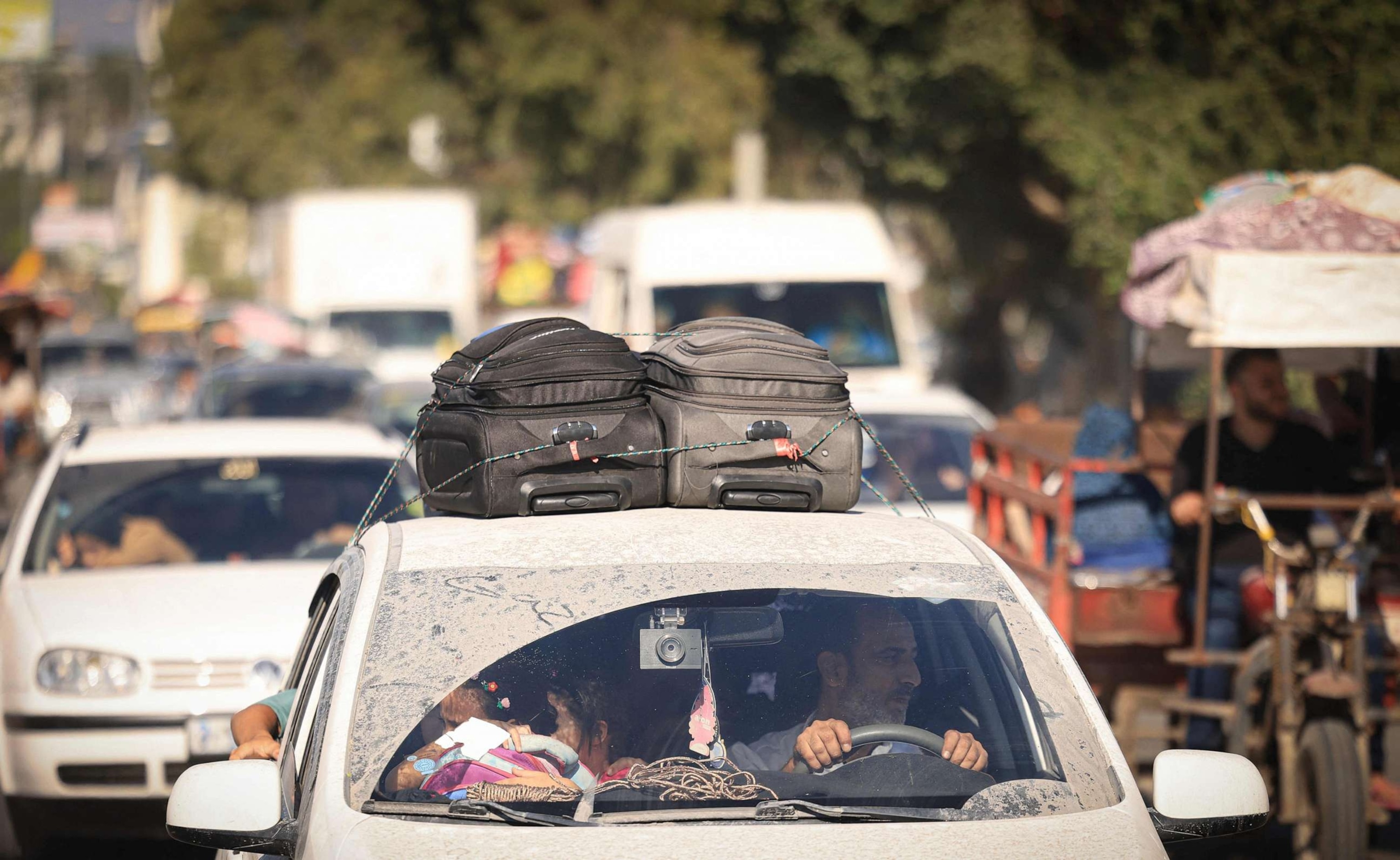
Blinken meets with Palestinian Authority President Mahmoud Abbas in Jordan and conveys the need to cool tensions across the West Bank and prevent the conflict from broadening. Blinken also expresses condolences to the families of those killed in Gaza.
Biden speaks with family members of Americans who remain unaccounted for after the attack in Israel.
The first chartered flight to evacuate Americans from Israel departs for Europe.

Attempted mass exodus from Gaza delayed at Egypt border
Oct. 14
Egypt, Israel and the United States agree to allow foreigners in Gaza to pass through the Rafah border crossing into Egypt, causing a chaotic rush to the southern border by Palestinians and foreigners hoping to escape. But no firm timeline is set on when the border will open.
The IDF announces it is preparing to implement an “integrated and coordinated attack from the air, sea and land” with an emphasis on a “significant ground operation.”
Oct. 15
Sari Bashi, program director for Human Rights Watch, tells ABC News Live that the situation in Gaza is “about as bad as it can get.”
“People are being forced to drink brackish, untreated water because the price of bottled water has gone up beyond what most people can afford,” Bashi says. “Food is short, there is no electricity. Even emergency generators that hospitals have are running low on fuel, and supplies are dwindling.”
The number of U.S. citizens determined to have been killed in the Hamas attack on Israel rises to 31. At least 13 American nationals are still missing, a State Department spokesperson says.
Biden to go to the Middle East
Oct. 16
The Israel Defense Forces say the number of hostages believed to have been taken by Hamas has climbed to 199.
Hamas says it is holding between 200 and 250 hostages and releases video of one of them, 21-year-old Mia Shem, who was abducted at the Supernova music festival attacked by the terrorist group.
Ronen Bar, director of Israel’s Shin Bet security service, says in a letter that he takes responsibility for the Israeli intelligence failure that aided in the success of the Hamas attack, saying, “We were unable to generate a sufficient warning for [the] Hamas’ attack.”
The White House announces Biden will visit Israel.
Oct. 17
The Pentagon confirms that 2,000 U.S. troops have been put on a heightened state of readiness for possible deployment to the Middle East, a Pentagon official said Tuesday morning.
Overnight Israeli air raids killed at least 71 people and injured at least 50 others in Gaza, the Palestinian Health Ministry says.
The Hamas-run Gaza Health Ministry says hundreds of people are killed in an explosion outside the al-Ahli Hospital in the middle of Gaza City, which was being used to shelter thousands of displaced residents.
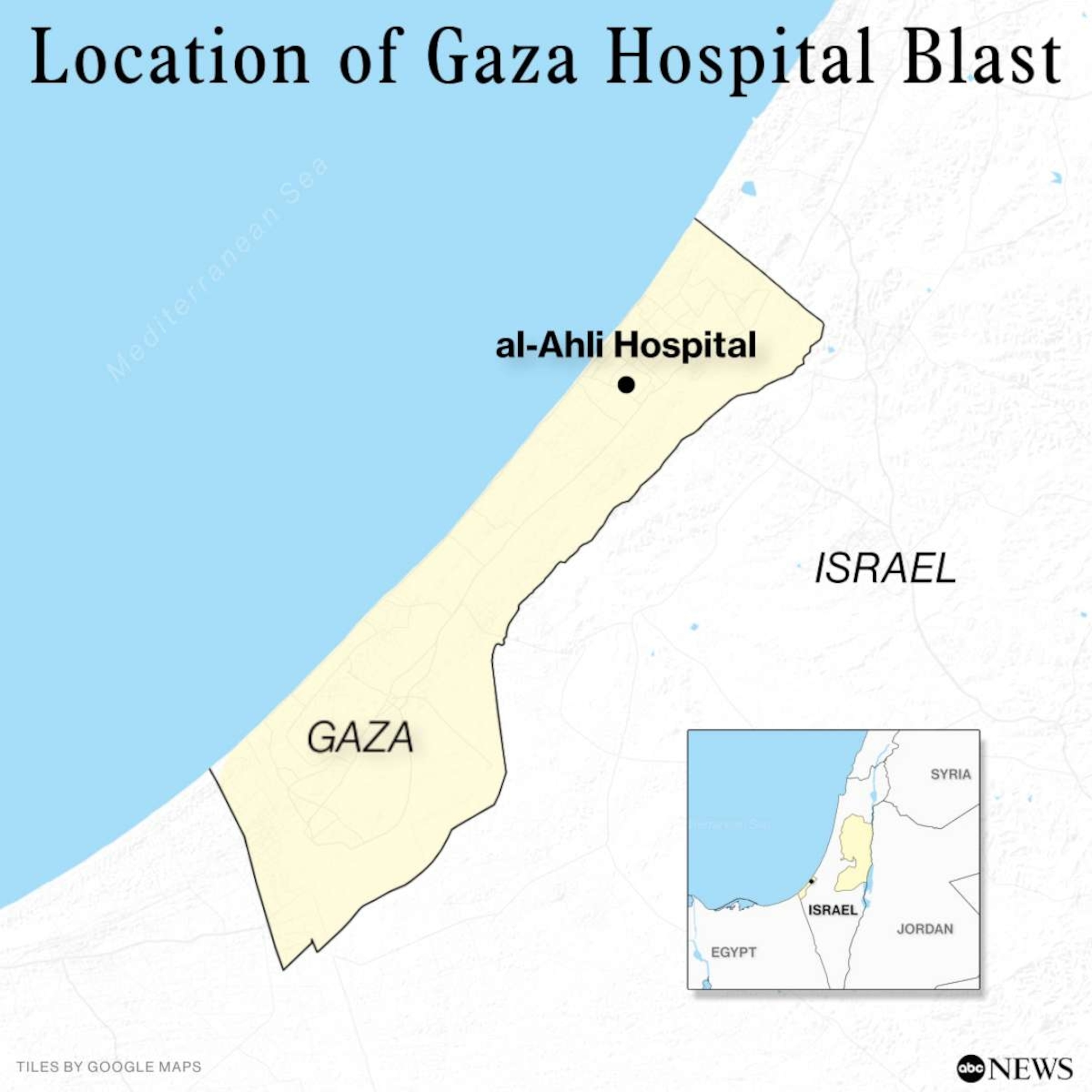
Palestinian officials claim an Israeli airstrike hit the hospital. The IDF denies responsibility for the blast, saying a failed rocket launched by the Palestinian Islamic Jihad caused it. Netanyahu says, “The barbaric terrorists in Gaza are the ones who attacked the hospital.” A senior U.S. official tells ABC News at the time that U.S. officials at this point “just don’t know where the rocket came from.”
Days later, on Oct. 24, U.S. intelligence officials confirmed a preliminary U.S. government assessment “with high confidence that Israel was not responsible for the explosion of the hospital and that Palestinian militants were responsible.” The assessment added “with low confidence” that Islamic Jihad “was responsible for launching the rocket that landed on the hospital.” Some news outlets reported that a U.S. intelligence assessment estimated between 100 and 300 people were likely killed in the blast.
The incident led to anti-Israel and anti-American protests in the Arab world.
Biden arrives in Israel
Oct. 18
Under the threat of rocket strikes and heightened security, President Biden arrives in Israel Wednesday morning and is greeted with an embrace by Prime Minister Netanyahu on the tarmac of Ben Gurion Airport near Tel Aviv.
During a joint appearance with Netanyahu, Biden says he is “proud to be here.”
“I want to say to the people of Israel, their courage, their commitment, their bravery is stunning, it’s really stunning,” Biden says, vowing to supply Israel with whatever it needs to defend itself.
In response, Netanyahu says, “Thank you, Mr. President. Thank you for standing with Israel today, tomorrow and always.”
At the Vatican in Rome, Pope Francis appeals for peace in the Middle East.
“Today our thoughts go to Israel and Palestine,” the pope says. “Casualties are rising and the situation in Gaza is desperate. Please do everything possible to avoid a humanitarian catastrophe.”
Oct. 19
President Biden returns to the White House from Israel and plans to address the nation Thursday night, laying out the United States’ response to the Hamas attacks on Israel. During his flight back to Washington on Air Force One, Biden tells reporters he had “blunt” talks with Israeli and Egyptian leaders about providing humanitarian aid to civilians trapped in Gaza, saying he negotiated an agreement to open the Rafah crossing gate in southern Gaza to allow up to 20 trucks with aid through.

“I came to get something done — I got it done,” he says, adding that the aid could start rolling into Gaza as early as Friday.
In his prime-time address Thursday evening, Biden is expected to lay out the “moment that we are in” with wars raging in the Middle East and Ukraine, how they connect to the lives of Americans at home, and how the administration and Congress need to respond so that resources from the United States continue to support both Israel and Ukraine, deputy national security adviser John Finer says on ABC’s “Good Morning America.”
Meanwhile, the IDF says it has determined that the number of Israeli hostages taken by Hamas is up to 203.
Avi Dichter, a member of the Israeli security cabinet, tells ABC News that Hamas and the Islamic Jihad in Gaza have a combined 50,000 fighters and that the Israeli military, which has mobilized more than 400,000 soldiers, has the “green light” to move into Gaza and begin its mission of “destroying Hamas.”
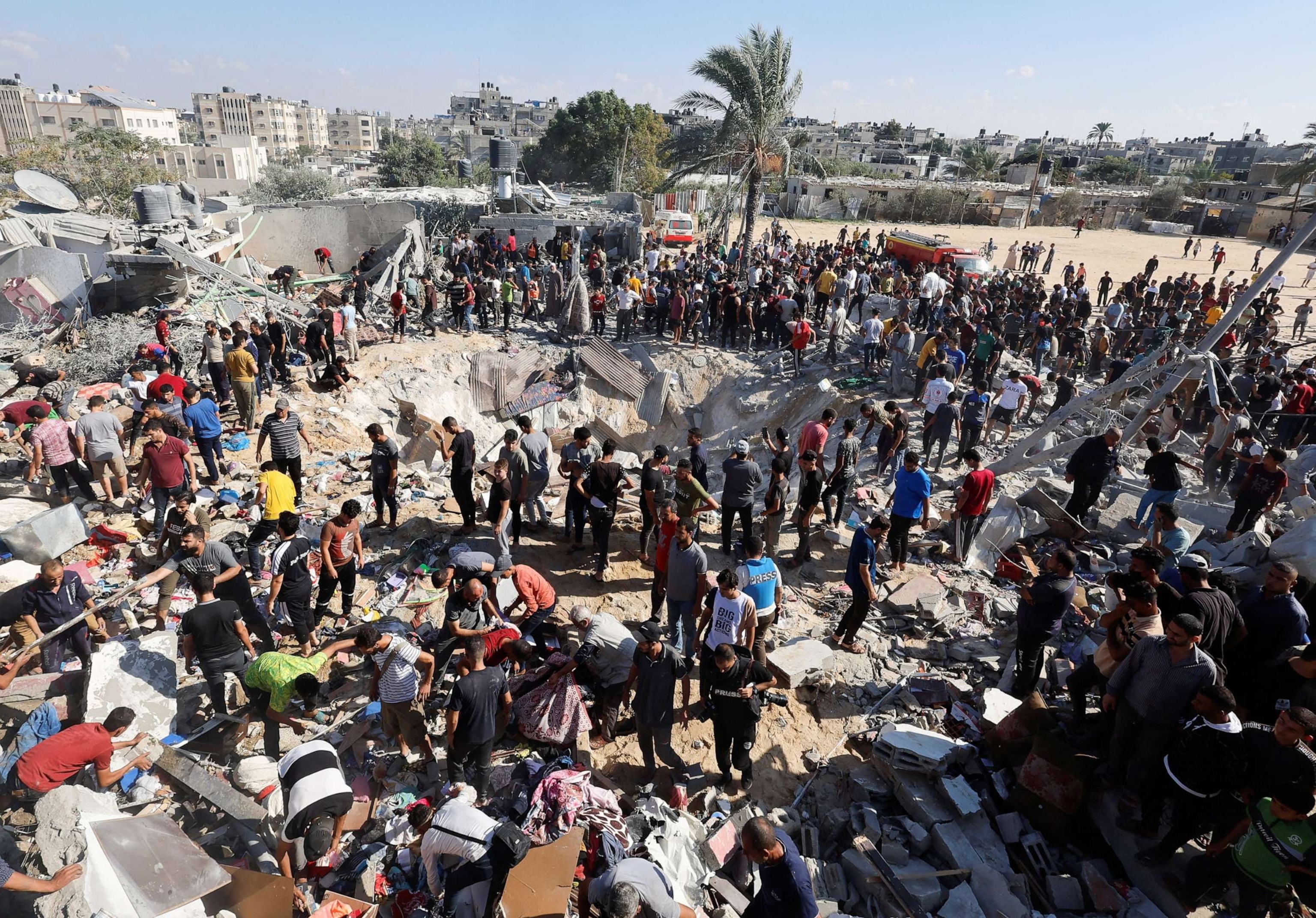
Oct. 21
Americans Judith Raanan, 59, and her daughter, Natalie Raanan, 17, were released by Hamas to the Red Cross and are now back in Israel, Israel Defense Forces says.
Oct. 23
The death toll in Gaza has exceeded 5,000 so far in the war, which is now on its 16th day, according to the Palestinian Health Authority.
Meanwhile, two hostages have been released by Hamas, the Israeli Hostage Center confirmed. The hostages are two elderly women who are both Israeli nationals, the center said. The released hostages are 85-year-old Yocheved Lifshitz and 79-year-old Nurit Cooper, both from the Kibbutz Nir Oz, the center said.
The Red Cross said it helped transport the hostages out of Gaza Monday evening. The hostages have since arrived back in Israel, the hostage center said. The Israeli military said Monday that at least 222 hostages were taken by Hamas since Oct. 7. Two American hostages, a mother and daughter, have also been released.
The Family Forum of the Missing and Hostages said in a statement, “Over 200 Israeli citizens are being held in deplorable conditions and have been waiting to return home for 17 days. We call on the Israeli government and world leaders to bring everyone home now.”
Netanyahu says war has entered ‘new phase’
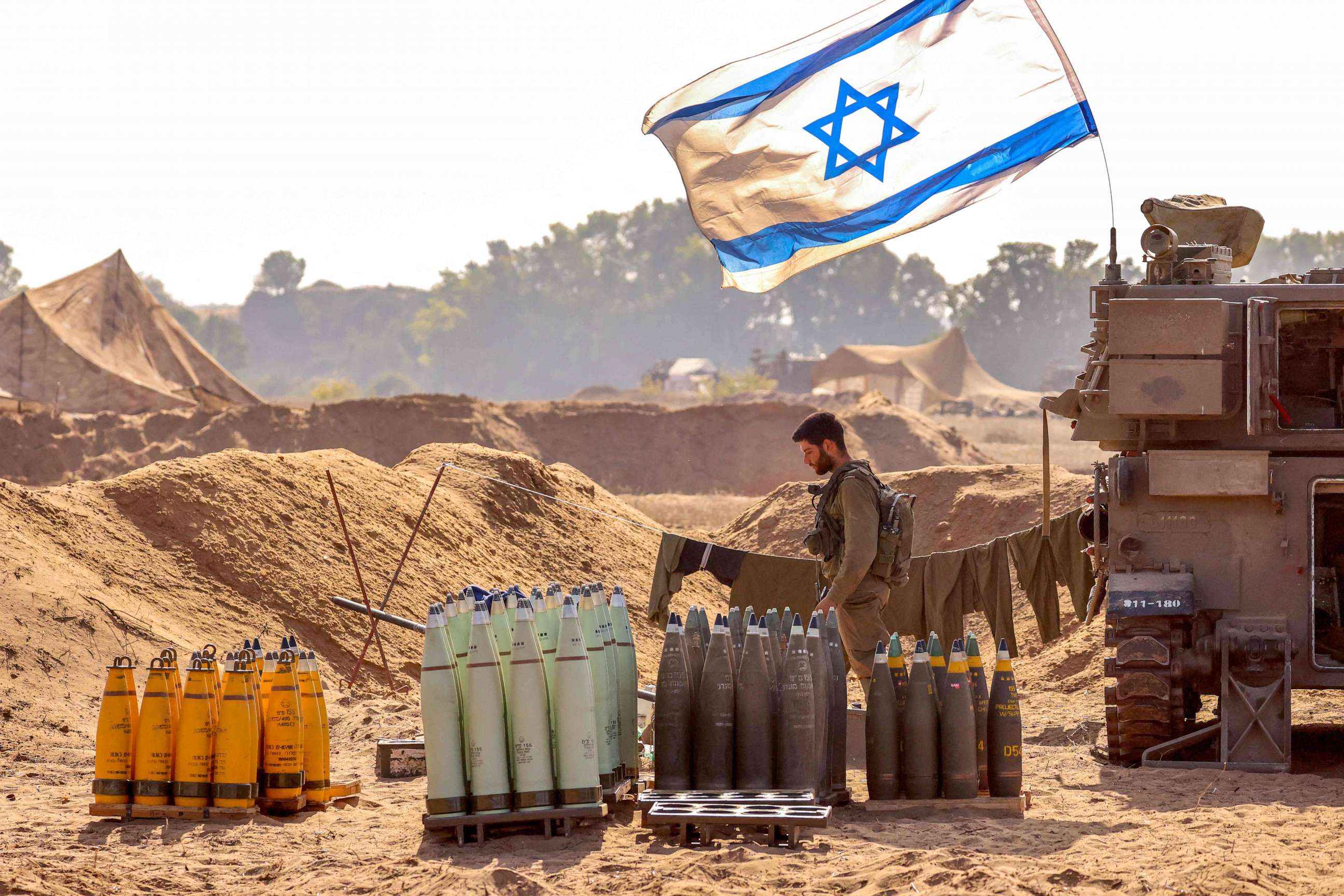
Oct. 28
Prime Minister Netanyahu announces that the war on Hamas had entered a “new phase,” including increased aerial attacks and broader, sustained ground operations.
Oct. 30
The death of Shani Luk, a 23-year-old German-Israeli woman who was kidnapped by Hamas on Oct. 7, is confirmed by both the Israeli Foreign Ministry and the German government.
German Chancellor Olaf Scholz writes on social media, “The news of Shani Louk’s death is terrible.”
“This shows the full barbarity behind the Hamas attack — who must be held accountable.” Scholz says. “This is terror, and Israel has the right to defend itself.”
Nov. 1
Gaza’s Jabalia refugee camp, the most populous refugee camp in the region, is hit by a second airstrike, according to the Hamas-run Gaza Health Ministry.
The Israel Defense Forces confirms that on Nov. 1, “based on precise intelligence, IDF fighter jets struck a Hamas command and control complex” in Jabalia, and that Hamas fighters were killed in the strike.
“Hamas deliberately builds its terror infrastructure under, around and within civilian buildings, intentionally endangering Gazan civilians,” the IDF says. “The IDF has been urging Gazans in this neighborhood to evacuate as part of its efforts to mitigate harm to civilians. The IDF continues to call on all residents of northern Gaza and Gaza City to evacuate southwards to a safer area.”
The IDF also takes responsibility for the first strike on Oct. 31, saying the blast killed a Hamas official who the IDF claimed was one of the leaders of the Oct. 7 attack on Israel.
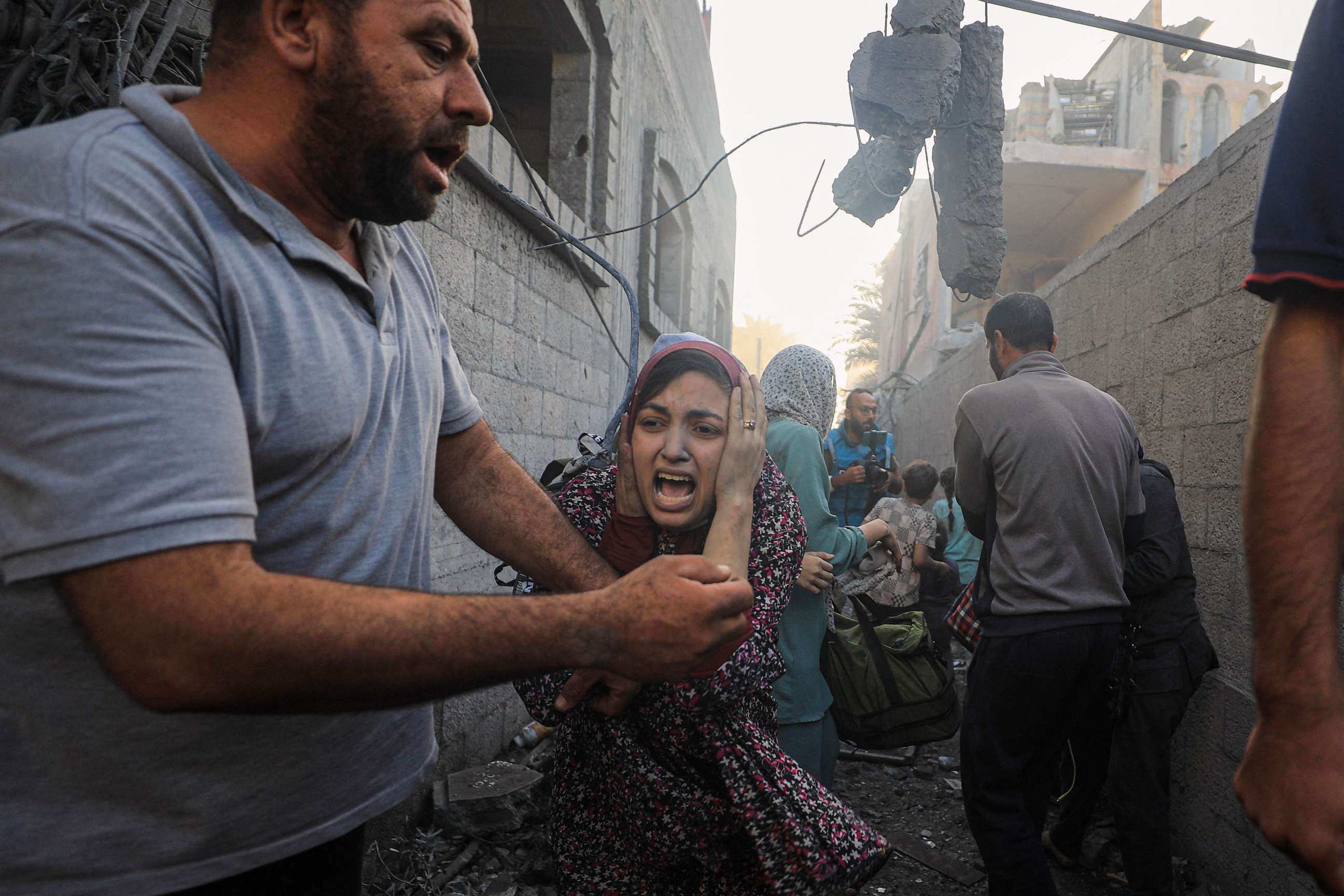
The border crossing between Gaza and Egypt opens on Nov. 1, allowing some foreign nationals and injured Gaza residents to exit the enclave for the first time since the Israel-Hamas war began on Oct. 7.
Seventeen ambulances, each transporting one injured Gazan, crossed the border into Egypt, ABC News has confirmed.
The Rafah border crossing, which is controlled by Egypt, was expected to allow about 500 foreign passport holders to exit, according to the Gaza Borders and Crossings Authority, which released a list of names of those who would be allowed across. At least 110 dual nationals have crossed the Rafah border into Egypt, ABC News confirms.
Nov. 2 and 3
Hamas releases two videos, one on each day, of what it claims are its fighters emerging from tunnels to fight.
ABC News can’t confirm when or where the videos were shot.
Nov. 5
Thousands of pro-Palestinian protesters come together to call for a cease-fire and an end to the siege on the Gaza Strip at a march in Washington, D.C.’s Freedom Plaza.
Nov. 6
Israeli Air Force planes continued their bombing campaign throughout Gaza, striking some 450 targets overnight, as other Israeli forces captured a Hamas compound, IDF officials said in a statement.
The Hamas compound included a web of “underground terror tunnels,” as well as training areas and observation posts, the military said in a post on Telegram. Israel did not disclose the location of the compound. ABC News was not immediately able to verify the IDF’s claims.
“During the operation, several Hamas terrorists were killed,” Israel said.
At least 10,022 people have died in Gaza since the Israel-Hamas war began on Oct. 7, the Hamas-run Gaza Health Ministry said on Nov. 6.

As U.S. officials continued their calls for humanitarian “pauses” to allow aid to reach civilians stuck in Gaza, Israel showed no signs of slowing their advance.
Netanyahu, speaking with ABC News “World News Tonight” anchor David Muir in an exclusive interview, again rejected the idea of a cease-fire in Gaza unless hostages are released.

“What they’re proposing is a humanitarian pause, there will be no pause?” Muir pressed Netanyahu, shortly after he had spoken with Biden.
“Well, there’ll be no cease-fire, general cease-fire, in Gaza without the release of our hostages,” Netanyahu responded. “As far as tactical little pauses, an hour here, an hour there. We’ve had them before, I suppose, will check the circumstances in order to enable goods, humanitarian goods to come in, or our hostages, individual hostages to leave. But I don’t think there’s going to be a general cease-fire.”
Israel implements 4-hour pauses
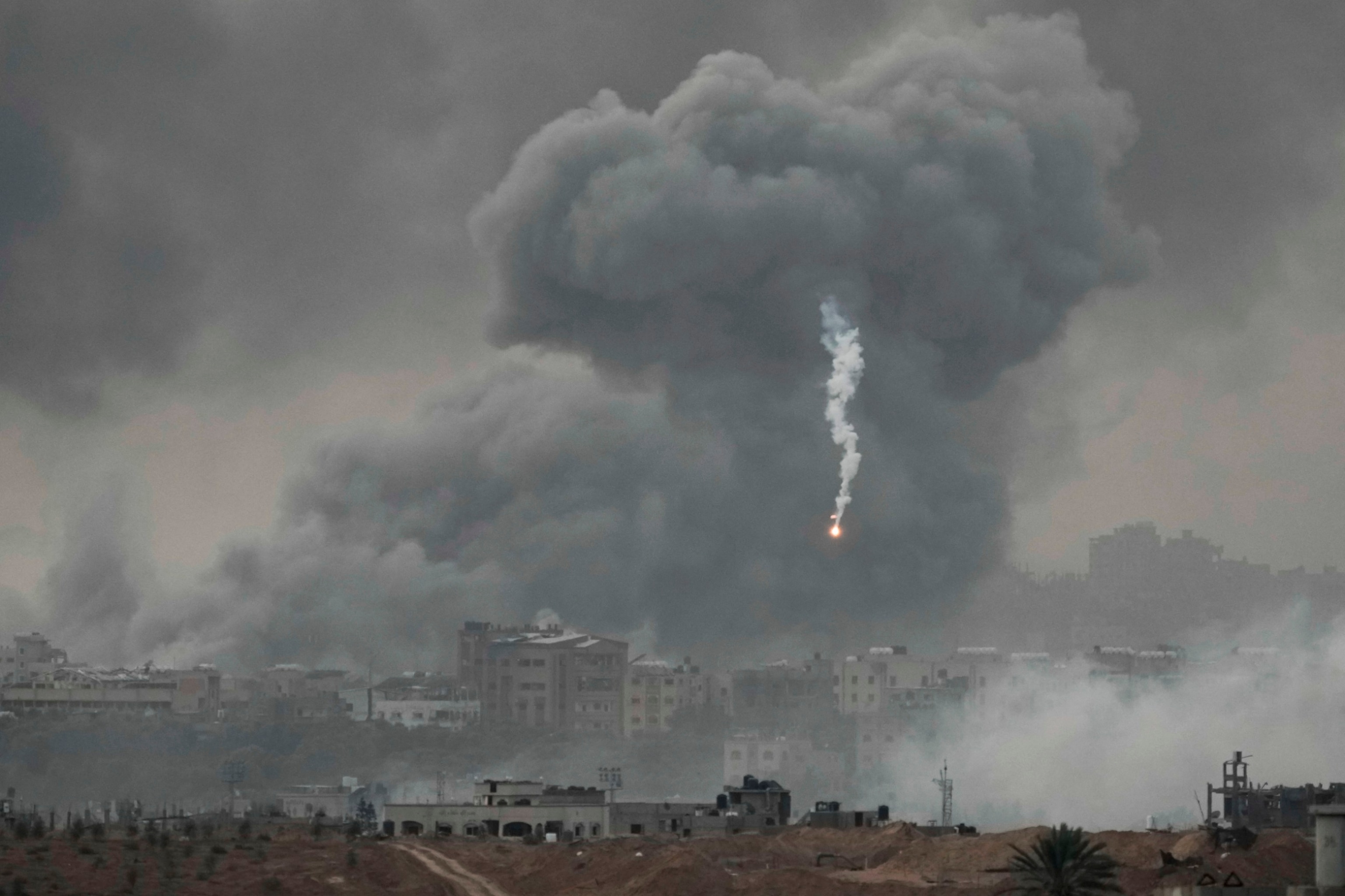
Nov. 9
Israel will start to implement four-hour pauses in fighting in areas of northern Gaza each day, National Security Council spokesperson John Kirby announces.
“We’ve been told by the Israelis that there will be no military operations in these areas over the duration of the pause, and that this process is starting today,” Kirby says.
IDF spokesman Richard Hecht says the pauses are already being held. Kirby says the pauses will be announced three hours ahead of time.
Kirby says the Israelis have also agreed to a second humanitarian corridor that will allow people to leave hostile areas of northern Gaza.
Nov. 10
The fighting around Al-Shifa Hospital in Gaza intensifies, and a strike hits the courtyard outside the hospital. The hospital loses power and ceases functioning as a hospital.
Nov. 12
At least nine Americans remain unaccounted for, and U.S. officials believe they are being held hostage by Hamas in Gaza, White House national security adviser Jake Sullivan tells ABC News.
Nov. 14
The IDF announces the temporary opening of evacuation corridors in the war-torn Gaza Strip to allow more people in the north of the Hamas-run enclave to move south.
A “safe passage” will be open “for humanitarian purposes” via the Salah al-Din highway toward the area south of Wadi Gaza between 9 a.m. and 4 p.m. local time, according to the IDF.
Israeli Defense Minister Gallant says during a briefing that “Hamas has lost control of Northern Gaza.”
“We control Northern Gaza, especially Gaza City,” Gallant says.
The IDF says it’s carrying out a “precise and targeted operation against Hamas” in an area in the Al-Shifa Hospital.
Nov. 15
The IDF says its ground troops are continuing to carry out “a precise and targeted operation against Hamas in a specified area” of the largest hospital in the Gaza Strip.
The director of Gaza’s Al-Shifa Hospital later says Israeli forces have now left the hospital complex following an hourslong raid, but said “tanks and forces are completely stationed in its surroundings.”
A fuel truck crosses the Rafah border crossing from Egypt into Gaza, marking the first time fuel entered Gaza since Oct. 7, a spokesman for the Palestinian Crossings Authority said, according to The Associated Press.
Nov. 16
Israeli ground troops continue to carry out a raid on Al-Shifa Hospital for a second day.
A spokesperson for the IDF tells ABC News that, as of 1 p.m. local time, soldiers were still inside the hospital, some 34 hours after launching the raid.
The body of Yehudit Weiss, a 65-year-old woman who was abducted by Hamas on Oct. 7, was found at a “structure adjacent” to Al-Shifa Hospital, the IDF says in a statement.
The Palestinian Telecommunications Group says “all telecom services in Gaza Strip have gone out of service as all energy sources sustaining the network have been depleted, and fuel was not allowed in.”
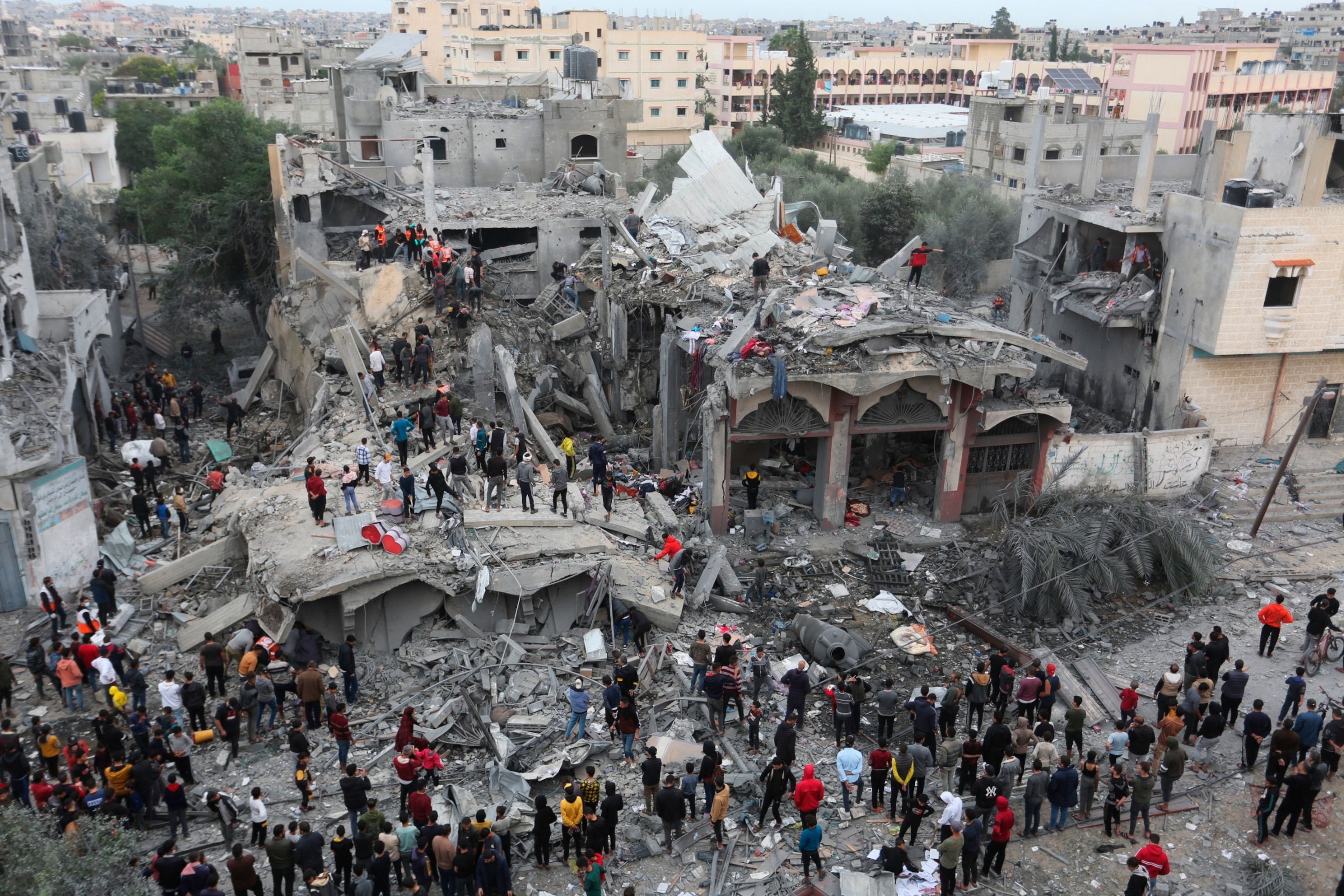
Nov. 17
Israeli ground troops continue to carry out a raid on Al-Shifa Hospital in Gaza for a third day.
A spokesperson for the IDF tells ABC News that, as of 1 p.m. local time, soldiers were still inside the hospital, some 58 hours after launching the raid.
The Israeli government announces it will allow two fuel trucks per day to enter the Gaza Strip.
Telecommunications services have been partially restored in Gaza thanks to fuel reaching the region, the Palestinian Authority Communications Ministry says.
Nov. 19
IDF intelligence shows that 19-year-old Noa Marciano, one of the hostages whose body was found near the Al-Shifa Hospital complex, was initially taken into Gaza alive after the Oct. 7 Hamas terrorist attack on Israel, the IDF says during a briefing.
After being taken into Gaza “during ongoing combat, in the vicinity of where she was held captive, Noa’s Hamas captor was killed, and Noa was injured,” IDF spokesman Daniel Hagari says.
“An independent pathological report has determined Noa’s injuries were not life-threatening,” he adds.
The IDF says that, “according to the intelligence we have in our hands … Hamas terrorists took Noa into Shifa hospital where she was murdered quickly.”
“We send our heartfelt condolences to Noa’s family. We did not reach Noa in time. This has only made the IDF more determined to do everything, everything in our power, to bring all our hostages home,” Hagari adds.
Nov. 20
More than two dozen premature, low-birthweight babies have been evacuated from Gaza to Egypt to receive specialized care.
A joint mission between the United Nations and the Palestine Red Crescent Society, led by the World Health Organization, evacuated 31 babies from the embattled Al-Shifa Hospital in northern Gaza to Al-Helal Al-Emarati Maternity Hospital in southern Gaza over the weekend.
Twenty-eight arrive in Egypt, while three others who were in stable condition continue to receive care in Gaza, WHO officials said.
Al-Qaida, citing Gaza’s Al-Shifa Hospital, 9/11 and Benghazi, releases a new statement calling for its followers to attack U.S. and Israeli targets, especially embassies, and to attack where they are without warning.
Netanyahu says war against Hamas won’t stop after a cease-fire
Nov. 21
The World Health Organization says at least three hospitals in the war-torn Gaza Strip have requested help with evacuating patients, and that planning is underway to evacuate Al-Shifa Hospital, Indonesian Hospital and Al-Ahli Hospital in northern Gaza — but that such an event was a last resort.
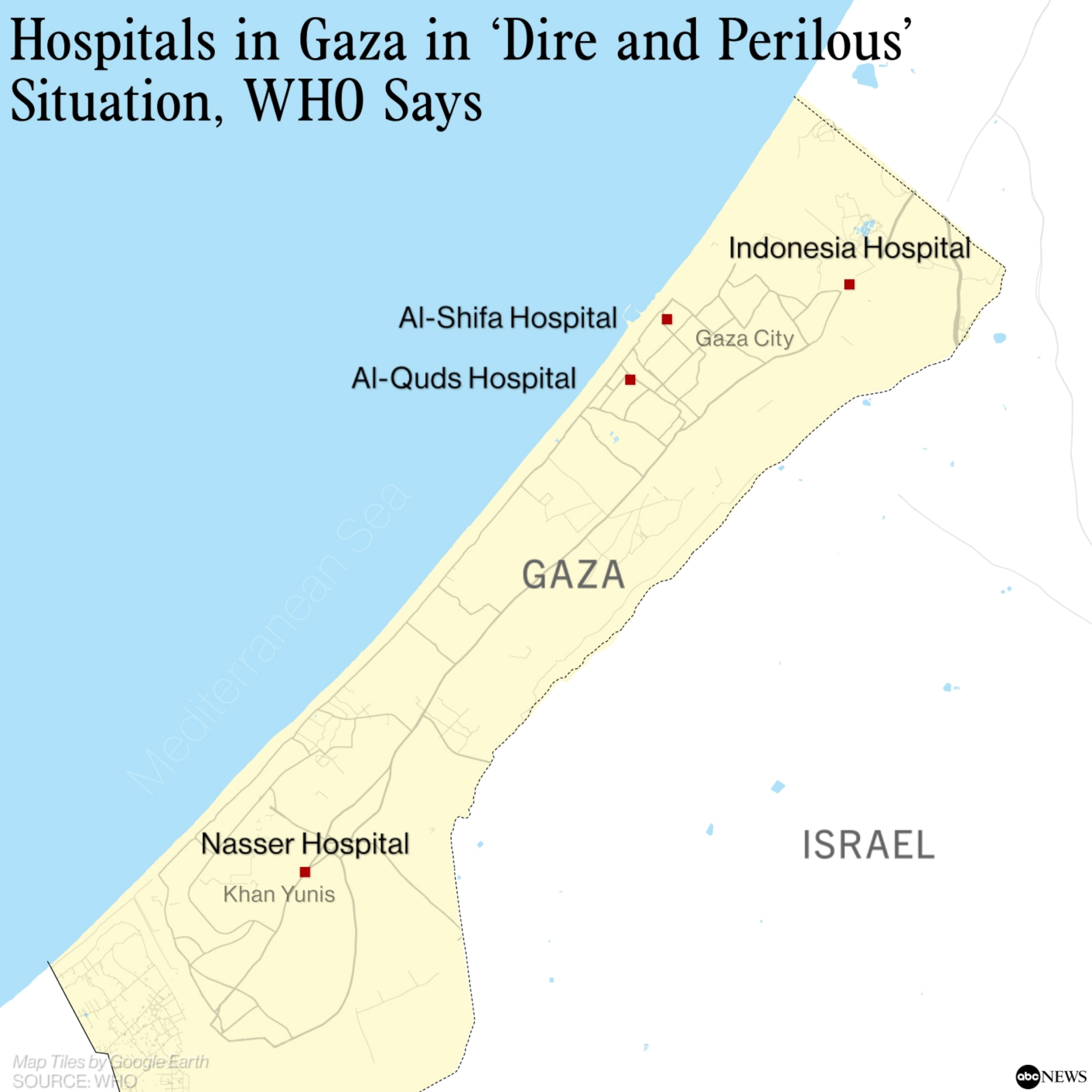
Three doctors were killed in a strike at northern Gaza’s Al-Awda Hospital, according to Doctors Without Borders. The hospital says only medical personnel, patients and the injured were inside the facility at the time.
Netanyahu, speaking ahead of a Cabinet meeting and vote on a potential hostage deal, says Israel’s war against Hamas will not stop after a cease-fire.
Netanyahu says the war will continue until Hamas is destroyed, all hostages are brought home, and Israel has ensured “that there will be no element in Gaza that threatens Israel.”
Israel’s Cabinet votes to approve deal for hostage release
Nov. 22
Israel’s Cabinet approved a deal that would allow for the release of at least 50 hostages over the course of a four-day pause in hostilities, Netanyahu announces. As a part of this deal, 150 Palestinian prisoners will also be released by Israel.
The “Israeli government has approved the outline to the first phase” of bringing hostages home, Netanyahu says in a release, with at least 50 being released over the course of the four-day pause in fighting.
The government of Israel, the IDF and the Israeli security forces will continue to fight the war for the return of all hostages, the elimination of Hamas and to ensure that Gaza will not pose a threat to Israel, according to Netanyahu.

Three Americans — including a 3-year-old — are expected to be part of the initial group of hostages that will be released as part of a deal negotiated between Hamas, Israel, Qatar and the United States, according to a senior administration official.
President Biden releases a statement thanking Sheikh Tamim bin Hamad Al-Thani of Qatar and President Abdel-Fattah El-Sisi of Egypt for their “critical leadership and partnership” in helping to broker a deal between Hamas and Israel over the release of hostages. He also thanks Netanyahu for his commitment to the temporary pause ensuring the deal can be carried out and “bring home additional American hostages.” Biden says he “will not stop until they are all released.”
Despite reaching an agreement with Hamas on a temporary pause in fighting in exchange for the release of dozens of hostages, the Israeli military continues to bombard the Gaza Strip later in the morning.
